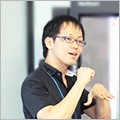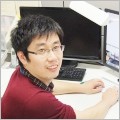
The 76th AICS Cafe
Date and Time: Fri. Sep. 4, 2015, 15:00-16:00
Place: Workshop room (6th floor) at AICS
Title: An introduction to computational social science and frameworks for parameter-space explorations
Speaker: Yohsuke Murase (Discrete Event Simulation Research Team)
The abundance of digital data due to the rapid development of ICT has generated entirely new, multidisciplinary approaches in social sciences, in which network theory and computational science play a considerable role both in terms of data analysis and modeling. Nowadays this field is known as computational social science and it has attracted a lot of attention.
In the first half of my talk, I will give a brief overview of computational social science and then introduce our recent researches on modeling social relationships[1,2]. In order to understand the underlying social activities, we propose microscopic models and compare the properties of the generated networks with the empirical observations.
In the latter half, I will introduce two kinds of frameworks for parameter-space explorations which is being developed by our team[3]. One of the most fundamental difficulties of social simulations is that the models for social phenomena are not established well as those for natural sciences. It is also difficult to determine the initial condition or boundary condition even if big data are available since they are usually incomplete. Thus, for social simulation, it is more important to capture the global property of phase space rather than simulating a specific event precisely. To overcome these difficulties, we are developing frameworks which enables us to explore parameter space more efficiently.
References:
[1] Y. Murase et al., "Multilayer weighted social network model", Phys. Rev. E, 90, 052810 (2014) doi: 10.1103/PhysRevE.90.052810
[2] Y. Murase et al., "Modeling the role of relationship fading and breakup in social network formation”, PLoS ONE 10(7) e0133005 (2015) doi: 10.1371/journal.pone.0133005
[3] https://github.com/crest-cassia/oacis
Y. Murase et al., "A tool for parameter-space exploration", Physics Procedia 57, 73 (2014) doi: 10.1016/j.phpro.2014.08.134







